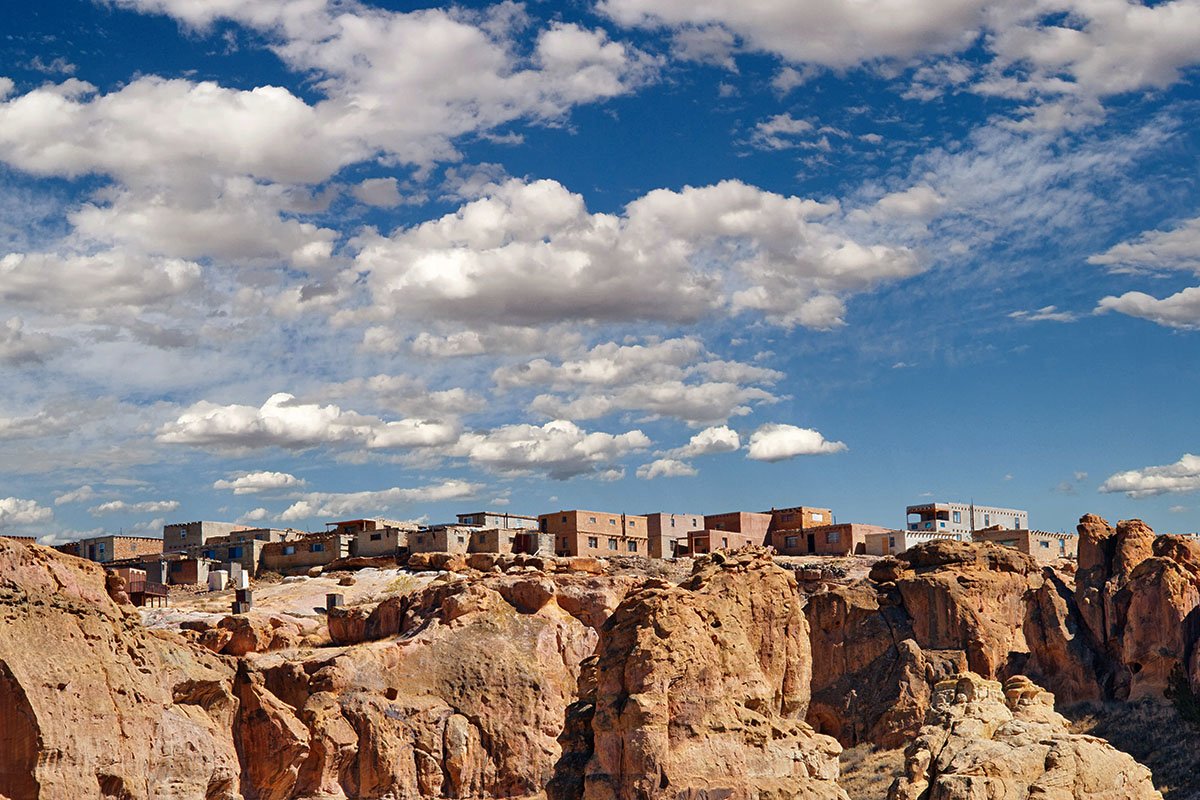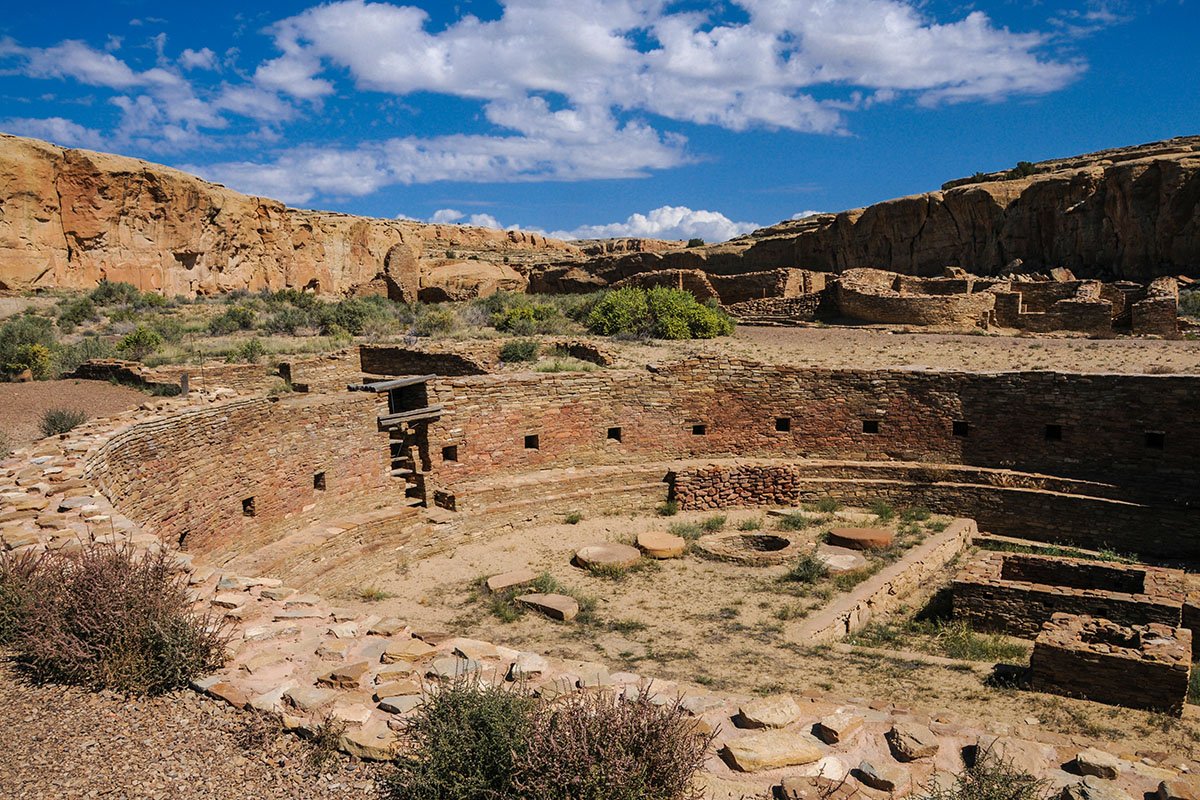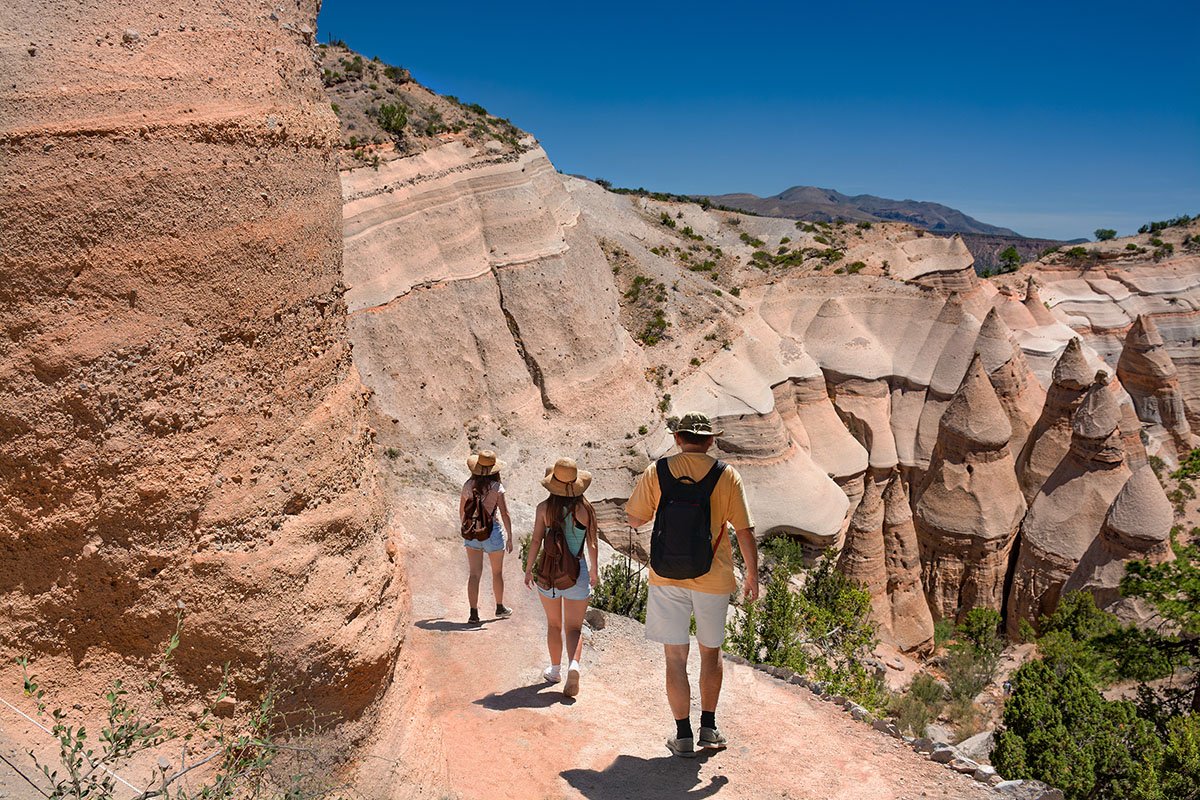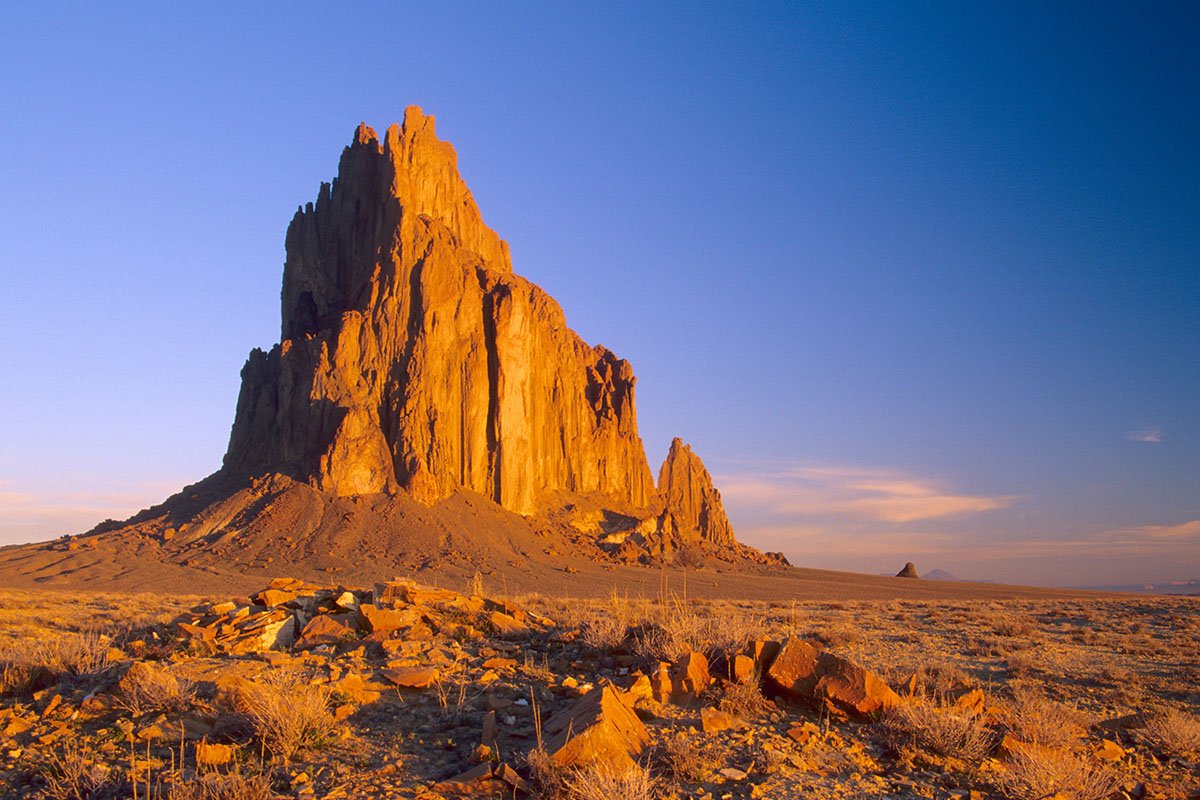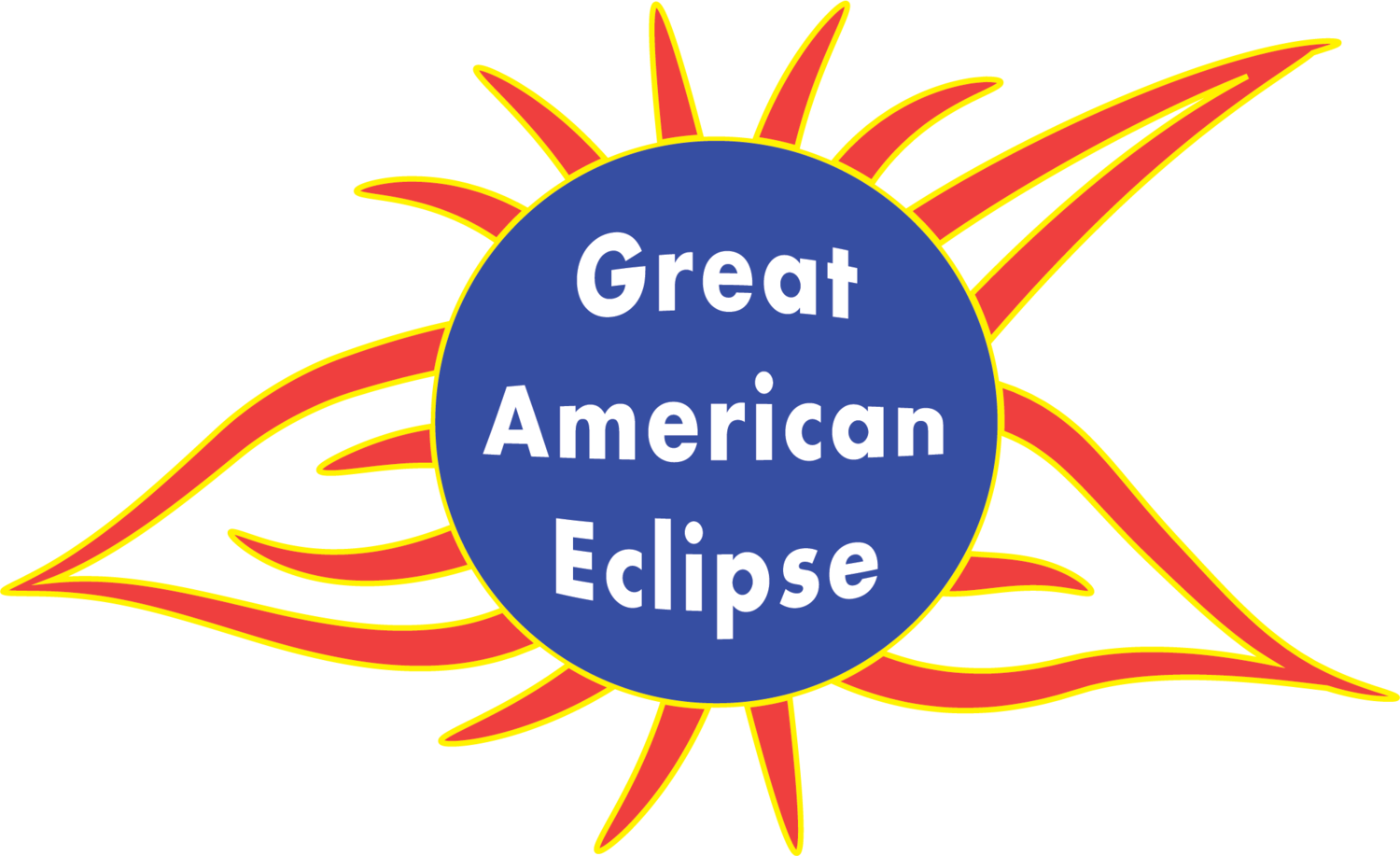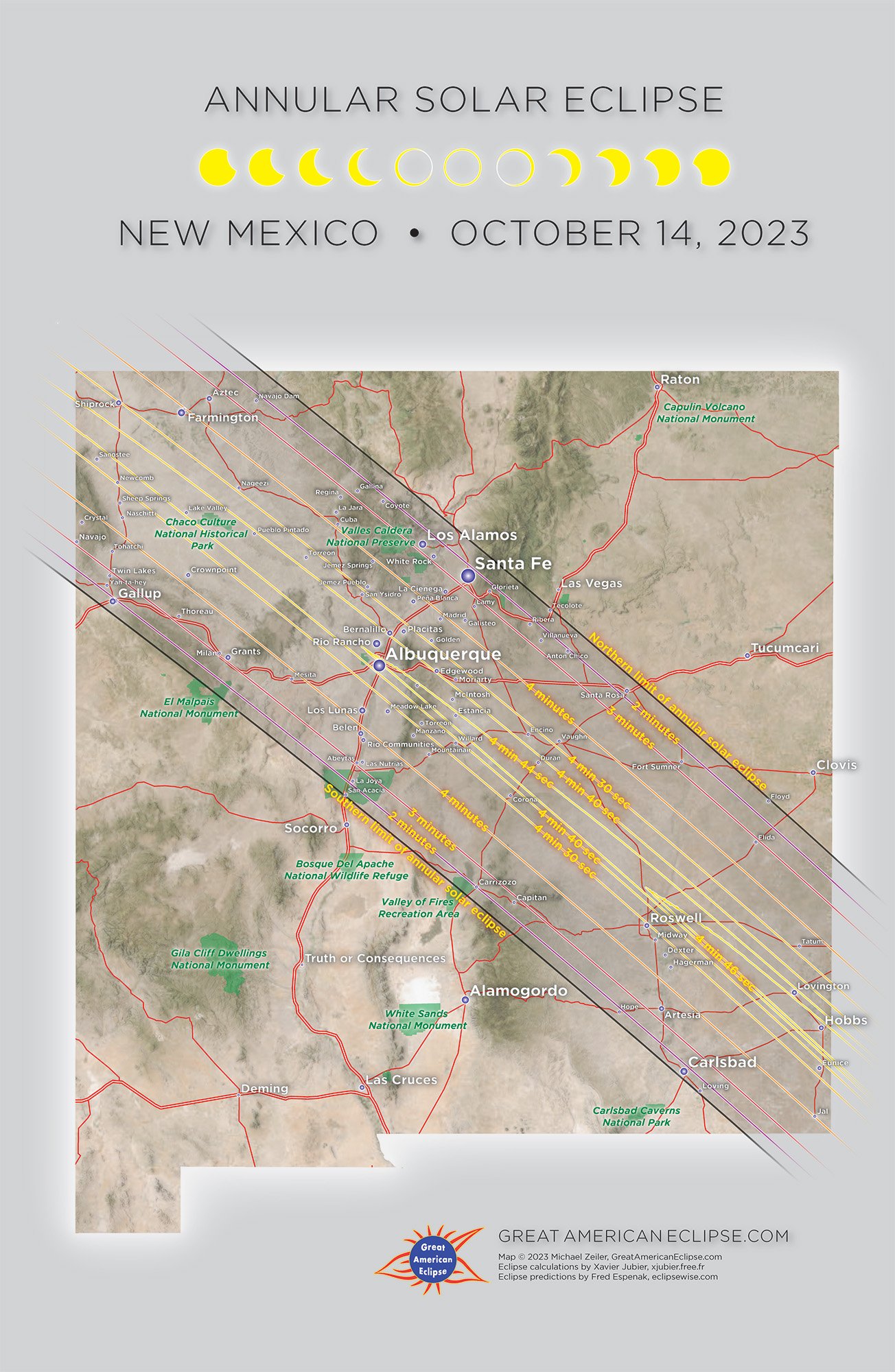Annular Solar Eclipse over New Mexico on October 14, 2023
THIS ANIMATION SIMULATES THE VIEW FROM A SPACECRAFT CHASING THE ANNULAR SOLAR ECLIPSE FROM AN ALTITUDE OF 125 MILES! DURING THIS RING OF FIRE ECLIPSE, THE SUN WILL APPEAR AS A DAZZLING THIN RING. BE SURE TO USE ECLIPSE GLASSES OR ANOTHER SAFE SOLAR VIEWING METHOD. AS THE ECLIPSE BEGINS IN THE EARLY MORNING IN OREGON, THE MOON'S SHADOW IS ELONGATED AND TRAVELING FAST AT 7000 MILES PER HOUR! AFTER CROSSING CALIFORNIA, NEVADA, IDAHO, UTAH, ARIZONA, COLORADO, NEW MEXICO, AND TEXAS, THE ANNULAR SOLAR ECLIPSE PROCEEDS TO CENTRAL AMERICA AND SOUTH AMERICA.
An annular solar eclipse neatly bisects New Mexico. If you are inside the path of annular solar eclipse, you will see the dramatic sight of the Sun as a thin ring, almost but not completely eclipsed by the Moon. Daylight will be dimmed considerably, but not dark like a total solar eclipse. This eerie sight can be enjoyed with eclipse glasses and other safe viewing methods.
The annular solar eclipse begins in New Mexico at 10:30 am MDT with the speed of the Moon’s shadow being 3005 mph. The annular solar eclipse leaves New Mexico at 10:46 am MDT and the Moon’s shadow diminishes to 2108 mph. The maximum duration of annularity in New Mexico is 4 minutes and 46 seconds.
New Mexico will be a top destination for many eclipse chasers because it offers the best weather prospects along the path of annular eclipse. Albuquerque is right on the center line of eclipse as it was during the annular solar eclipse of May 20, 2012.
What is very exciting is that the Albuquerque Balloon Fiesta coincides with the annular solar eclipse. If you are in Albuquerque, you can experience the mass ascension of hundreds of hot air balloons at sunrise on October 14, 2023 and then witness the annular solar eclipse around 10:35 am MDT. If you are in a different location in New Mexico, you plan to can see the mass ascension the following morning, this is a spectacle well worth seeing.
New Mexico is an incredibly scenic state with many notable sites for viewing the eclipse. National Park units inside the path of annular solar eclipse include the Aztec Ruins National Monument, Chaco Culture National Historic Park, Bandelier National Monument, Valles Caldera National Preserve, Petroglyph National Monument (next to Albuquerque), and Pecos National Historical Park. Other scenic sites are Shiprock, a prominent volcanic plug, and the Sandia Mountains overlooking Albuquerque.
There are many Native American reservations inside the path of the annular solar eclipse. These include the Navajo Nation, Kewa Pueblo, San Felipe Pueblo, Santa Ana Pueblo, Isleta Pueblo, San Ildefonso Pueblo, and Nambe Pueblo. If you visit a reservation, be aware that because of indigenous spiritual beliefs, many will choose to remain inside their homes during the eclipse.
Santa Fe will be an interesting destination for experienced eclipse chasers. The nearby ski area, Ski Santa Fe in the Sangre de Cristo Mountains, sits right on the northern limit of the path of annular solar eclipse. This location will enable extended views of the Baily’s Beads along with sweeping views.
About the Annular Solar Eclipse
During an annular solar eclipse, the apparent size of the Moon’s disk is slightly smaller than the apparent size of the Sun’s disk. Therefore, only the outer edge of the Sun remains visible and the Sun appears as a brilliant ring if you are inside the path of annular solar eclipse. This is an otherworldly sight often called a “ring of fire”. Here are instructions for the safely viewing solar eclipses by the American Astronomical Society and endorsed by several professional societies.
Timeline of the october 14, 2023 annular solar eclipse. Learn more at www.greatamericaneclipse.com/october-14-2023
This eclipse will be a warm-up act for the spectacle of the total solar eclipse crossing the United States just 177 days later on April 8, 2024. While not as dramatic as a total solar eclipse, an annular solar eclipse promises a spectacular vision featuring the striking sight of the Sun as a ring. We recommend solar binoculars for viewing the dynamic Baily’s Beads, sparkling points of brilliant sunlight as the Moon’s limb rolls over the Sun’s edge.
Tips for viewing the annular solar eclipse
Learn the simple methods to safely view a solar eclipse. At all times during an annular solar eclipse, you must use eclipse glasses or other safe viewing method. Visit eclipse.aas.org/eye-safety for detailed instructions.
Plan ahead. If you choose to stay in a hotel, be aware that most will sell out. A perfect guide to planning your eclipse is our field guide, greatamericaneclipse.com/books/field-guide-to-the-2023-and-2024-solar-eclipses.
Get to your destination early and try to spend eclipse night at or near your viewing location. Expect the highways and freeways to be extra busy in the aftermath of totality.
Be self-sufficient. Fill up your gas tank and bring food and water.
Check the local TV weather reports as eclipse day approaches. The meteorologists will give you great advice on viewing the eclipse and whether you may need to relocate. We recommend eclipsophile.com as the essential site for eclipse meteorology.
Unless you are an experienced photographer, we recommend that you not attempt photography during the eclipse. You will be so stunned that it will be difficult to operate a camera. If you choose to do photography, visit Fred Espenak’s MrEclipse.com for advice.
Animation of the Annular Solar Eclipse across New Mexico
Our animation shows you exactly where the eclipse will be total, moment-by-moment. The maximum duration shown is for locations along the very center of the eclipse path. This animation is built using data from retired NASA astrophysicist Fred Espenak (eclipsewise.com) and eclipse expert Xavier Jubier (xjubier.free.fr). You may freely share our maps and animations on social media and web sites, we just ask for a link to our website.
Impact of the eclipse in New Mexico
The annular solar eclipse will attract people from throughout the nation. People will most likely drive the shortest path to a location inside the path of annular solar eclipse. This map shows that New Mexico can expect visitors from the metropolitan areas of Tucson and Denver as well as much of Kansas, Nebraska, South Dakota, Iowa, and Minnesota. Albuquerque is at the center of the path of annularity and is the second largest city wholly inside the path, after San Antonio, Texas.
Eclipse weather in New Mexico
COURTESY OF ECLIPSOPHILE.COM
The essential eclipse weather website eclipsophile.com says that the weather prospects in New Mexico are the best in the path of annular solar eclipse in the United States: “Count the number of world-class observatories in Arizona and New Mexico and you will be reassured that you have reached the best eclipse-watching weather along the track. The centreline graph of cloud amount shows a low-amplitude up-and-down pattern that averages around 28 percent mean cloudiness. The map … shows a mottled blue pattern, indicating that the sunny character of the climate extends across the width and length of the eclipse path in these states.”
Also: “Cloud cover in New Mexico and surrounding states comes mostly from cold fronts that sweep southward from the Great Plains and the Colorado mountains. They bring heavy cloudiness for the most part, but seldom cover the whole of the track while passing through Arizona and New Mexico. Since fronts are usually well forecast several days ahead, mobility will be a game-saving advantage. Albuquerque, located at the junction of Interstates 25 and 40, would make a good home base in the days before, but if you are confident of the weather, then New Mexico and the surrounding states have marvelous attractions to frame your eclipse experience. These include Chaco Canyon National Historical Park, Mesa Verde National Park, and, of course, Roswell.”
Our advice is to stack your odds by paying attention to short-term weather forecasts and if poor weather is forecast, jump in your car very early on eclipse day (or the evening before) and drive either to the northwest or southeast to chase after clear skies. You will never regret the effort to seek out a clear view of an annular eclipse of the Sun, it will register in your memory all your life.
Eclipse times at scenic sites in New Mexico
